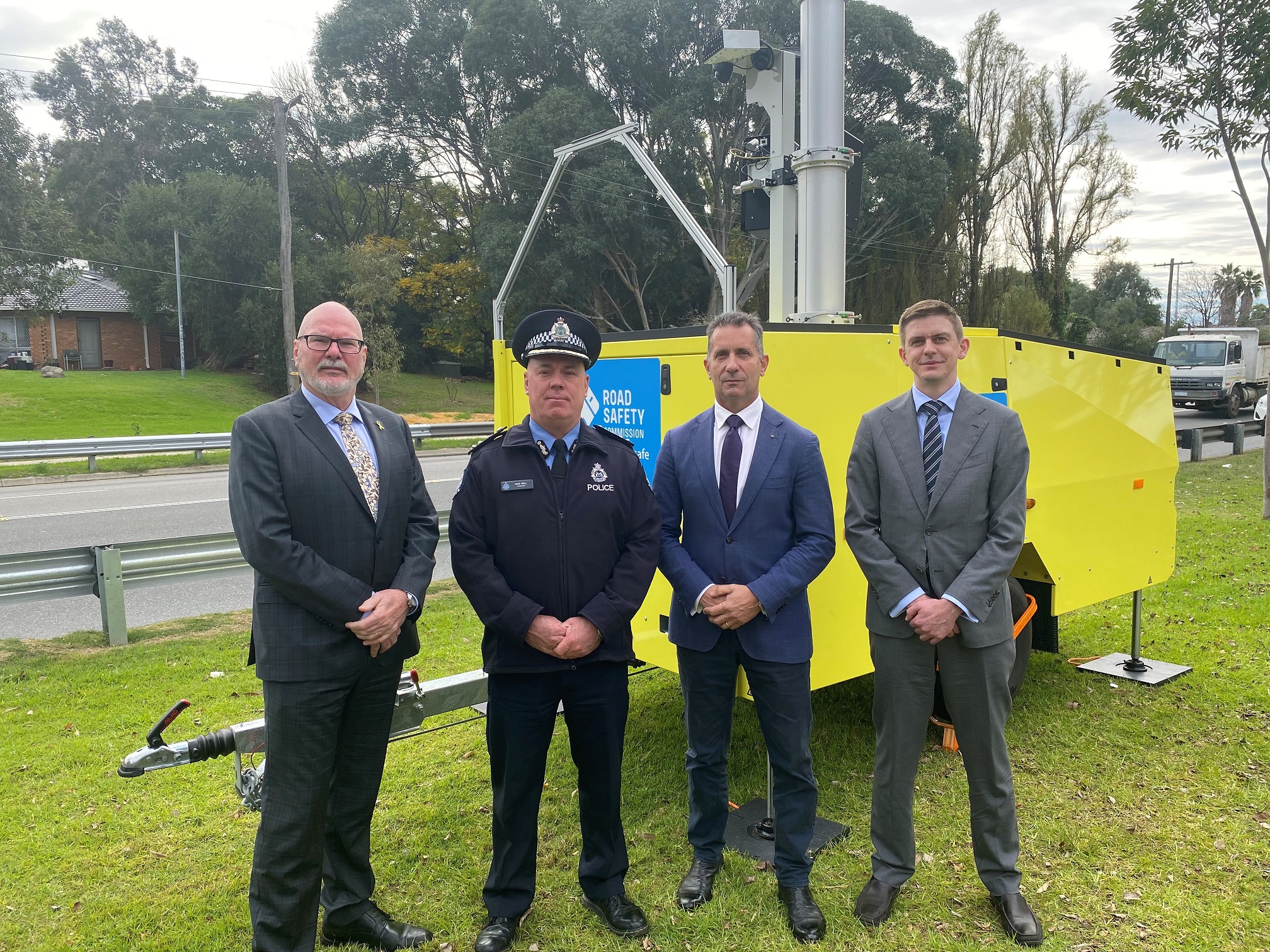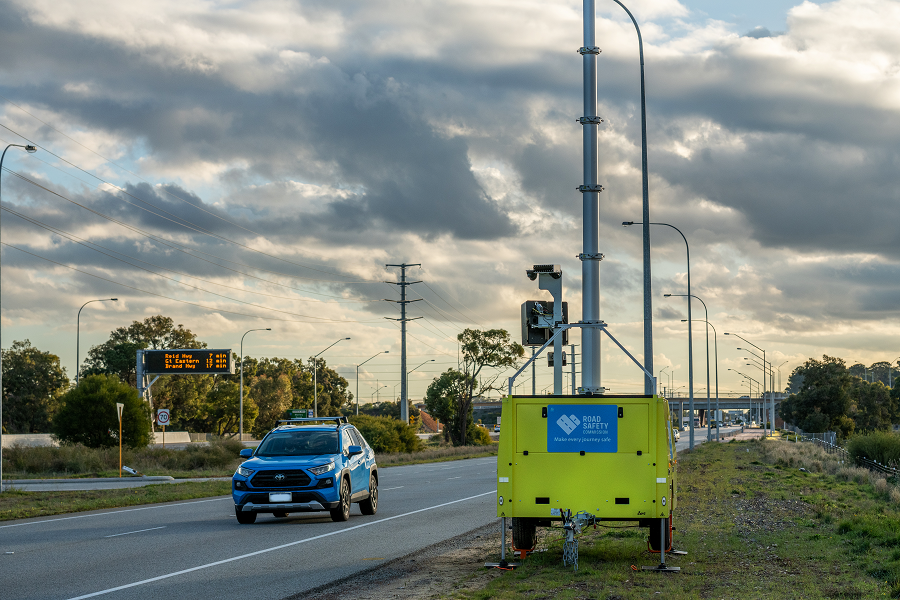
Road Safety Minister Paul Papalia launched Western Australia’s mobile point-to-point safety camera trial on Wednesday 20 July, with the cutting-edge Australian-first technology to be trialled over the next three months.
The six cameras, which work in pairs to detect average speed as well as spot speed, also use the latest artificial intelligence to identify other high-risk behaviours, including using a mobile phone while driving, and not wearing a seatbelt.
Completely mobile and with the flexibility to be operated and monitored 24/7, the cameras will be trialled on a variety of roads in the metropolitan, Wheatbelt, Mid-West, South-West and Great Southern regions.
No infringements will be issued during the trial, with the Road Safety Commission focused on collecting information about the suitability of the cameras on WA roads, and whether they are likely to improve driver behaviour and road safety outcomes.
Last year, 166 people died and a further 1,587 were seriously injured on WA roads. Speed and inattention were two of the leading contributing factors in these crashes, and 85 people who were killed or seriously injured in a motor vehicle were not wearing a seatbelt. In a concerning trend, the number of people seriously injured while not wearing a seatbelt increased nearly 25 per cent compared to the five-year average.
Similar smart technology created by Acusensus, the Australian company appointed to supply and monitor the safety cameras throughout the trial, has already saved lives in New South Wales and Queensland.
In New South Wales, where mobile phone detection cameras have been introduced, 121 road deaths have been avoided over the past two years when compared to previous trends. The first six months following the introduction of mobile phone and seatbelt detection cameras in Queensland coincided with a 10 per cent reduction in fatalities when compared to past trends.
Mr Papalia highlighted speed, inattention and not wearing a seatbelt as key contributors to trauma on Western Australian roads and described the cameras, with their ability to detect all three in an Australian first, as the Swiss Army knife of road safety cameras.
"We've seen new camera technology result in promising reductions in fatalities in other states and I am proud to build on this, and take the lead in safety camera technology with this trial,” he said.
The $1.5 million trial is funded through the Road Trauma Trust Account, which sees 100 per cent of red light and speed camera infringements allocated to projects and programs which reduce injuries and deaths on WA roads.
Pictured:
- Image 1: Road Safety Commissioner Adrian Warner, State Traffic Commander Mike Bell, Road Safety Minister Paul Papalia and Acusensus Managing Director Alexander Jannink with one of the six mobile point to point camera trailers being trialled on WA roads.
- Image 2: One of the mobile safety cameras being trialled on Gnangara Road.



